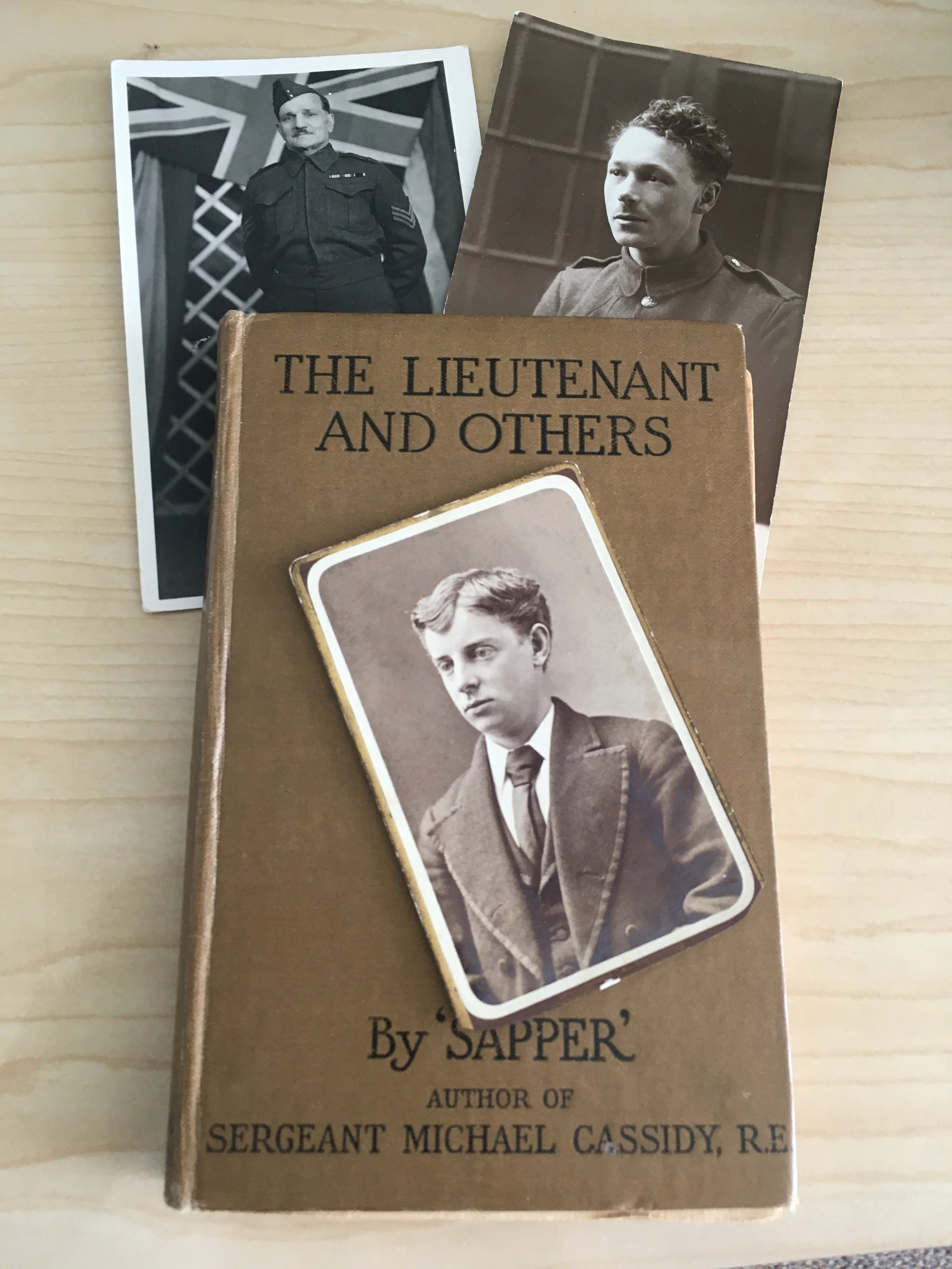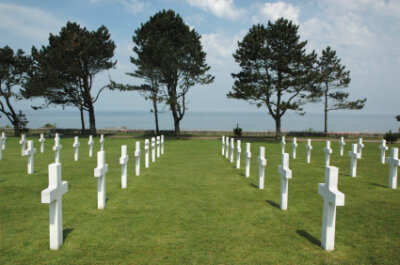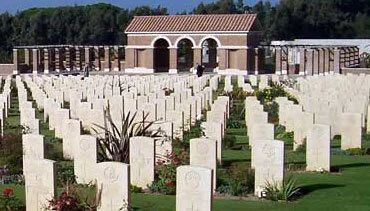Last spring, three young men - ancestors of hers - drifted into Maureen Magee’s head and took up residence, insisting that she pay attention to them. And because she is a writer, she decided to write about them - a book, a story? What followed was a journey, and a conclusion, she couldn’t have imagined.
All tagged World War II
Omaha Beach
When a group of study-abroad students in France embarks on a spontaneous long-distance walk to Omaha Beach, they discover that though they may have little in common, the walk was the same.
Returning to Leyte Landing, For the First Time
by B.J. Stolbov
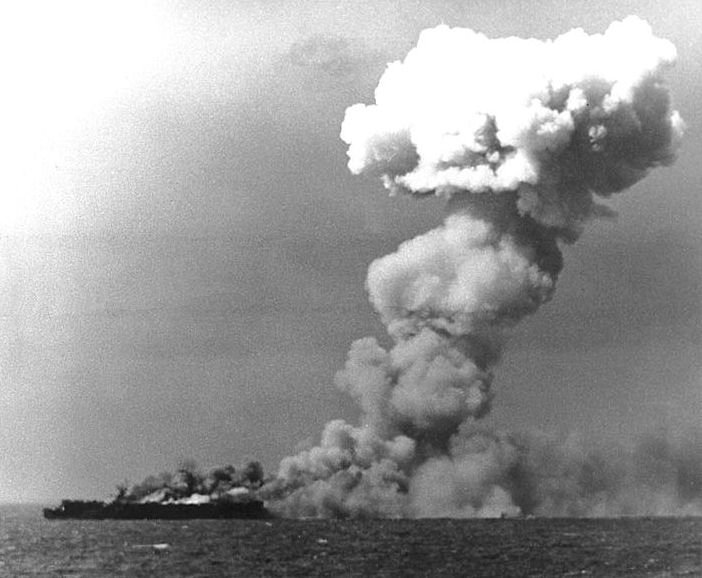 Battle of Leyte Gulf, USS Princeton via Wikipedia commons.If you were to go across the Pacific Ocean by ship to the southern Philippines, Leyte would be the one of the first places that you could land. In October 1944, General Douglas MacArthur and the U.S. Army knew that, the Imperial Japanese Army and General Tomoyuki Yamashita knew that, and Captain Morton S. Stolbov, D.D.S., a U.S. Army Field Surgeon, also knew that.
Battle of Leyte Gulf, USS Princeton via Wikipedia commons.If you were to go across the Pacific Ocean by ship to the southern Philippines, Leyte would be the one of the first places that you could land. In October 1944, General Douglas MacArthur and the U.S. Army knew that, the Imperial Japanese Army and General Tomoyuki Yamashita knew that, and Captain Morton S. Stolbov, D.D.S., a U.S. Army Field Surgeon, also knew that.
Leyte Gulf is the biggest gulf in the southern Philippines that opens into the Pacific Ocean. Ships, hundreds of ships steamed in, then turned north into San Pedro Bay, then turned west, toward the town of Palo, then finally turned onto a long expanse of beach that the U.S. Army called Red Beach. Here, on October 20, 1944, the largest landing in the Pacific Theater took place.
One of the first to come ashore that morning was Captain Morton S. Stolbov. He didn’t have to be there. He didn’t have to go to war. He had graduated from Temple University Dental School in Philadelphia, Pennsylvania, in 1939. He returned to his parents and his home, Tamaqua, Pennsylvania, a small town in the coal regions, and opened a dental practice. He was doing well in his hometown, his career, and his life. A short man with thick glasses and a receding hairline, he was already 27 years old, too old to be drafted, when the Japanese attacked Pearl Harbor on December 7, 1941. But, in one of the few spontaneous acts of his life, he volunteered to go to war.
Honoring America's Fallen Soldiers in Normandy
by Roy Stevenson
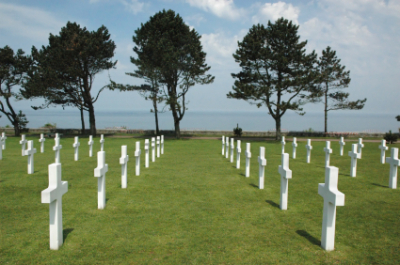 American Military Cemetery, Colleville, Normandy, FranceThe view from the top of the high, soft, sand dunes next to the American Military Cemetery at Colleville, Normandy, is great today. It’s a bright clear blue sky and I can see for miles. French fishing trawlers churn through the choppy, deep blue water, miles out to sea, leaving wide foaming wakes behind them. Gazing down across the long, deserted flat white expanse of Omaha Beach, I can see where the olive uniformed American soldiers debarked their landing craft, to shelter behind steel tetrahedrons, or sprint up the beach on D-Day, June 6, 1944.
American Military Cemetery, Colleville, Normandy, FranceThe view from the top of the high, soft, sand dunes next to the American Military Cemetery at Colleville, Normandy, is great today. It’s a bright clear blue sky and I can see for miles. French fishing trawlers churn through the choppy, deep blue water, miles out to sea, leaving wide foaming wakes behind them. Gazing down across the long, deserted flat white expanse of Omaha Beach, I can see where the olive uniformed American soldiers debarked their landing craft, to shelter behind steel tetrahedrons, or sprint up the beach on D-Day, June 6, 1944.
Descending the sand dunes, I walk the long 500 meters down the gently sloping beach to the water’s edge. It’s dead low tide. I turn around, looking back up towards the dunes. I’m amazed at how far away they are. They would seem like they were miles away, especially to a young soldier armed to the teeth and heavily weighed down with equipment.
It must have been terrifying trying to sprint up the beach into the teeth of a hailstorm of machine gun, rifle, and mortar fire. Of the soldiers in the first few D-Day landing craft, 90% didn’t even make it up the beach. In my mind’s eye I fleetingly see chaos, patches of red blood-drenched sand, and a flickering image of a young soldier in a soaked green uniform. “I must have seen “Saving Private Ryan” once too many times”, I think self-consciously.
Deep in thought, I trudge back up the steep, uneven sand dunes to the American Military Cemetery and walk along row upon row of perfectly aligned white crosses, on the vast 172-acre, smooth, emerald green-grassed plateau. The 9,387 crosses are a stupefying sight. They radiate outwards in perfectly straight lines no matter what angle they are viewed from.
Ghosts of Soldiers at Anzio
My father told me about Anzio. He showed me a yellowed newspaper with heavy, black 64-point headlines from World War II. “A-N-Z-I-O. What does it mean?” I asked.
“It’s a beach in Italy,” he said. “My best friend died there in the war.”
That snippet of memory surfaced recently when my husband, Richard, and I visited Ostia, the seaside town south of Rome.
